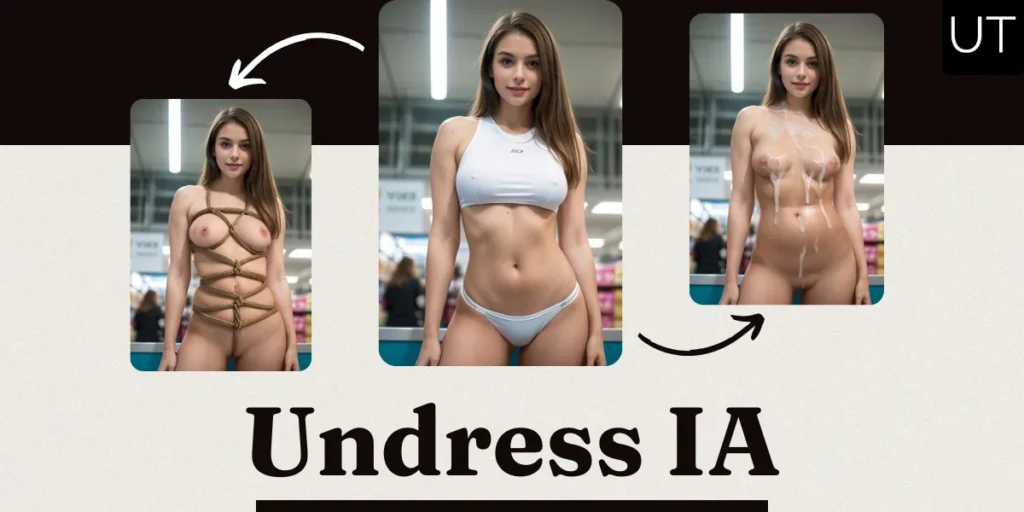
Just think about snapping a pic and magically seeing what’s underneath the clothes! 🪄 That’s the naughty promise of Undress IA, the latest craze that’s got everyone talking (and blushing!). 😳
In case you’re wondering, we’ll be using “undress ia” here—many people accidentally type this instead of “Undress IA.”
As an AI enthusiast, I couldn’t resist getting in to uncover the naked truth behind this cheeky technology.
Did you know Undress IA sites racked up a whopping 24 million visits in just one month? 😲 Talk about popularity!
But hold on to your pants, because there’s more to this AI striptease than meets the eye. 👀
Join me as I explore the ins and outs of Undress IA, from how it works to the burning questions on everyone’s mind.
Get ready for a wild ride!
How Does Undress IA Work?
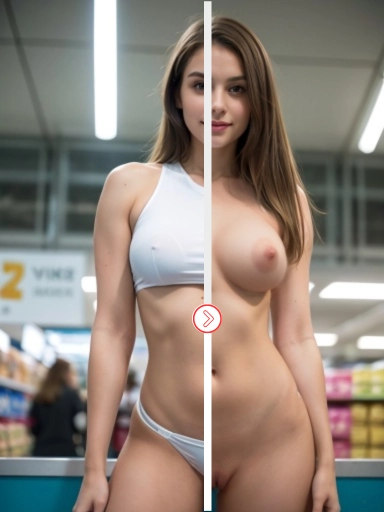
At its heart, Undress IA depends on a deep learning model that’s been trained using a big set of nude and clothed pictures. This training helps the AI system figure out the patterns and features that set clothed bodies apart from nude ones.
When someone uploads a picture to an Undress IA tool, the AI model looks at it closely and tries to guess what the person would look like without clothes. It then generates a new image based on this prediction, essentially “undressing” the subject.
The technical process involves a few key steps:
- Segmentation: The AI identifies and isolates the human figure in the image from the background.
- Clothing detection: It recognizes and segments the clothing items on the subject’s body.
- Body part mapping: The model predicts the positioning and shape of body parts that are occluded by clothing.
- Skin texture generation: Using its understanding of human anatomy and skin appearance learned from training data, the AI generates realistic bare skin in place of clothing.
- Image synthesis: The final “undressed” image is created by combining the generated nude body with the original image background.
Some Undress IA tools allow the user to make adjustments, such as specifying breast size or body type, to customize the generated nude image.
The rapid advancement of AI image synthesis, particularly with the development of Generative Adversarial Networks (GANs), has enabled the creation of highly realistic Undress IA outputs that can be difficult to distinguish from authentic nude photos.
Types of Undress IA Tools
There are several categories of Undress IA applications:
- Web-based tools – Browser-based apps that don’t require downloads.
- Mobile apps – Smartphone applications, often with basic free versions and paid upgrades.
- Desktop software – More powerful programs for PCs/Macs, used by professionals.
- APIs – Allow developers to integrate Undress IA into other applications.
Key Features of Undress IA
Common capabilities of Undress IA include:
- One-click undressing – Automatically remove clothing with a single click.
- Body type customization – Adjust body shapes/sizes.
- Pose adjustment – Change the person’s pose or camera angle.
- Clothing styles – Add different outfits or lingerie.
- Background editing – Alter or remove photo backgrounds.
- Face swapping – Replace faces while undressing bodies.
More advanced tools offer:
- Video processing – Undress people in video clips.
- Multiple subjects – Handle group photos with several people.
- Photorealistic results – Near indistinguishable from real nudes.
Technical Aspects of Undress IA
Undress IA relies on several key technologies:
- Convolutional neural networks (CNNs) – Used for image analysis and feature detection.
- Generative adversarial networks (GANs) – Create the synthetic nude imagery.
- Semantic segmentation – Identifies and separates different body parts/regions.
- Image inpainting – Fills in missing areas after clothing removal.
- Style transfer – Applies realistic skin textures and details.
The models require extensive training data, typically including:
- Clothed photos
- Nude photos
- Partial nudes
- Lingerie/swimwear images
Higher quality results generally need more diverse training datasets and longer training times.
Trends and Stats: Undress IA Technology
Undress IA usage has skyrocketed in recent months:
- 24 million visitors to undressing websites in September 2023 alone.
- 2,400% increase in referral links on social media platforms since 2022.
- 77% of devices now feature some form of AI capability.
Key demographics:
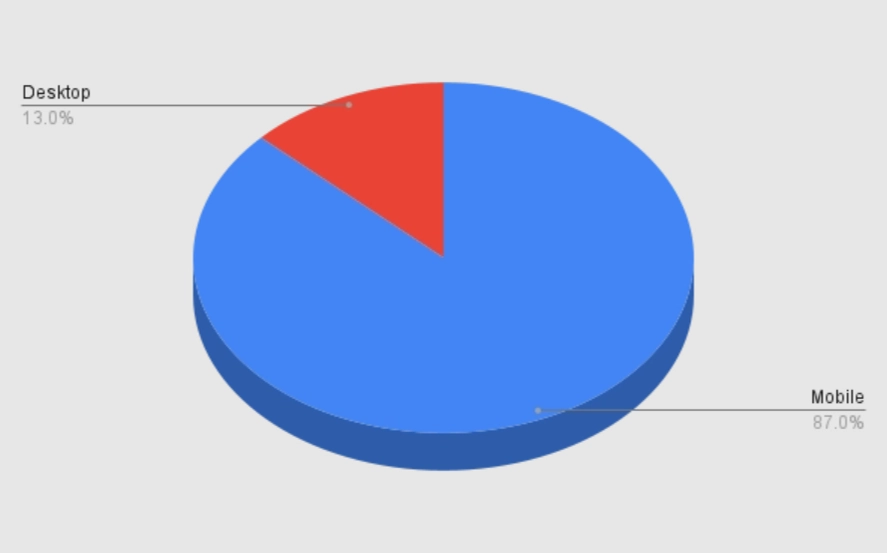
Market growth:
The AI image generation market is expected to reach $1.48 billion by 2026, with a CAGR of 28.5%.
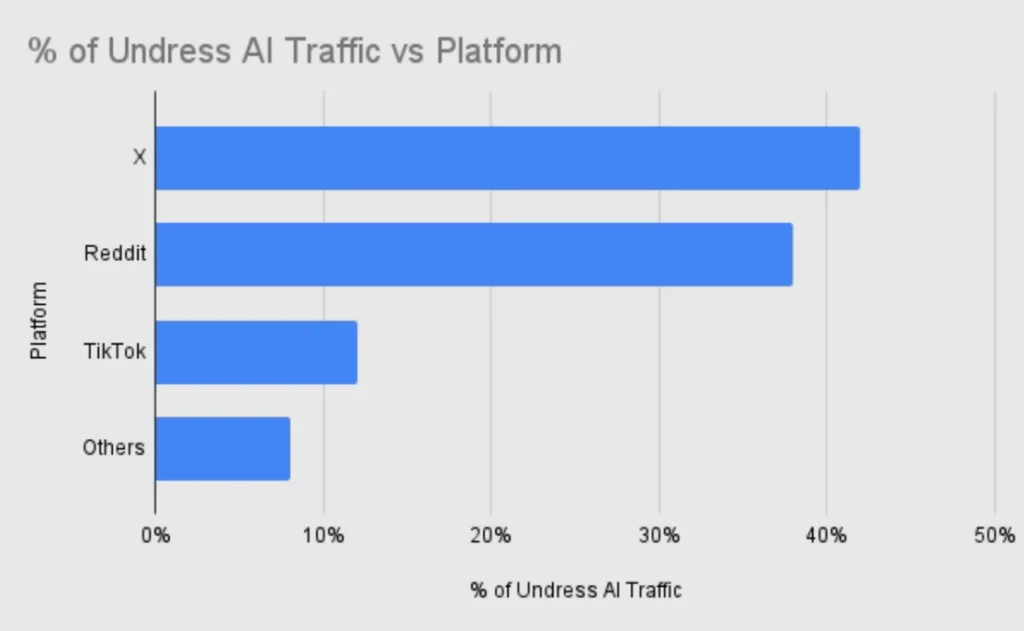
Use Cases
While controversial, Undress IA has found use in various fields:
- Entertainment – Creating digital nudity for films/TV without real nude scenes.
- Art – Allowing artists to render nude figures without live models.
- Fashion – Visualizing how clothing designs look on different body types.
- Medical – Assisting with body imaging and analysis in healthcare.
- Adult content – Producing synthetic nude imagery and deepfakes.
Accuracy and Limitations of Undress IA
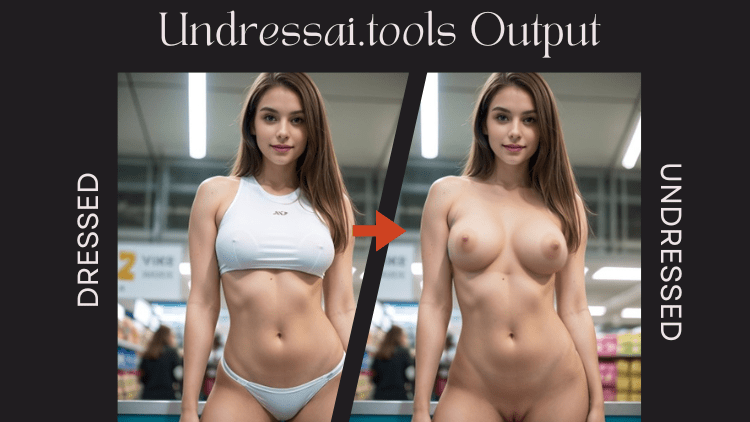
The quality of Undress IA results can vary widely based on:
- Input image quality/resolution
- Lighting and angles
- Clothing types and colors
- Body positions/poses
- Skin tones and textures
Common issues include:
- Unrealistic body proportions
- Blurry or warped areas
- Mismatched skin tones
- Incorrect anatomy
- Artifacts from original clothing
More advanced tools produce better results but still struggle with complex scenarios like intricate clothing or unusual poses.
Legal and Ethical Concerns
Undress IA raises significant legal and ethical questions:
- Consent – Using someone’s image without permission
- Privacy – Exposing private/intimate details
- Harassment – Potential for abuse and bullying
- Misinformation – Spreading fake nudes as real
- Copyright – Infringing on image ownership rights
- Child exploitation – Risks of undressing minors’ photos
Many jurisdictions are exploring regulations around synthetic nude imagery and deepfakes. Some Undress IA tools attempt to mitigate issues through:
- Age verification
- Consent checks
- Watermarking
- Usage agreements
However, enforcement remains challenging given the accessibility of the technology.
Protecting Yourself
To safeguard against unwanted use of Undress IA:
- Limit sharing of full-body photos online
- Use privacy settings on social media
- Watermark personal images
- Be cautious about who you share photos with
- Learn to spot AI-generated nudes
If you’re targeted, document evidence and report it to relevant authorities or platforms.
The Future of Undress IA and Synthetic Media
As AI continues to advance at a rapid pace, tools like Undress IA are likely to become even more sophisticated and accessible. Some experts think that soon, anyone with a phone will be able to make realistic nude pictures of others in just a few taps. This idea brings up urgent questions about how we’ll deal with the problems and risks of fake media as a society.
Can we create strong laws and ethical rules to protect people’s rights and stop misuse? Will we find ways to check where fake content comes from and hold its makers responsible? Some researchers and supporters are working on tech fixes to spot and mark AI-made images, like digital watermarks or using blockchain to track where they come from. Others are looking into ways to “protect” people against Undress IA by making and sharing harmless fake images of them making it harder to use their looks as a weapon.
In the end, tackling the dangers of Undress IA needs a varied strategy. This involves more than just tech fixes. It also calls for teaching people raising public awareness, and changing policies. We should encourage a culture where people agree and show respect in the digital world. We need to make it clear that making and sharing private pictures without permission is wrong.
As we deal with what Undress IA and other new AI tools mean, we have to work together to create a future where new ideas don’t harm people’s privacy, safety, and worth.
